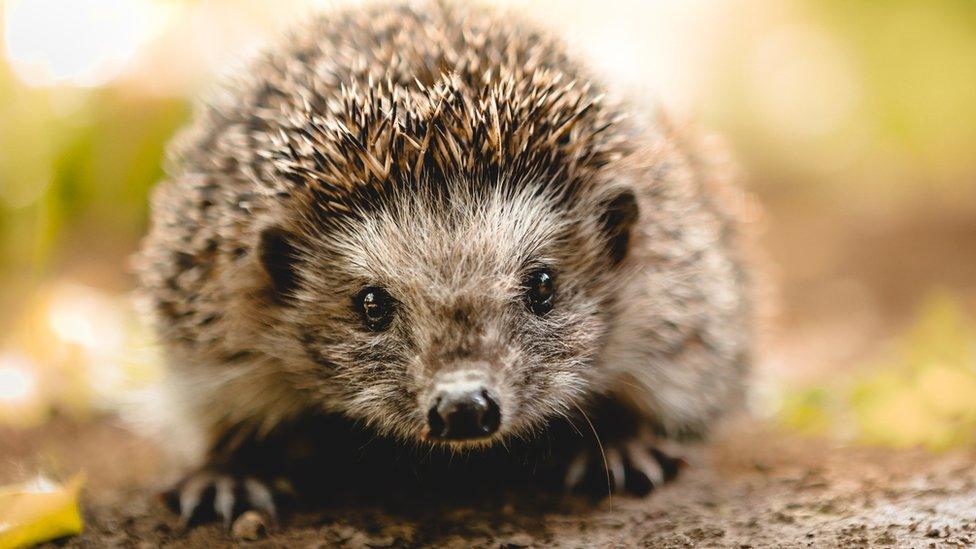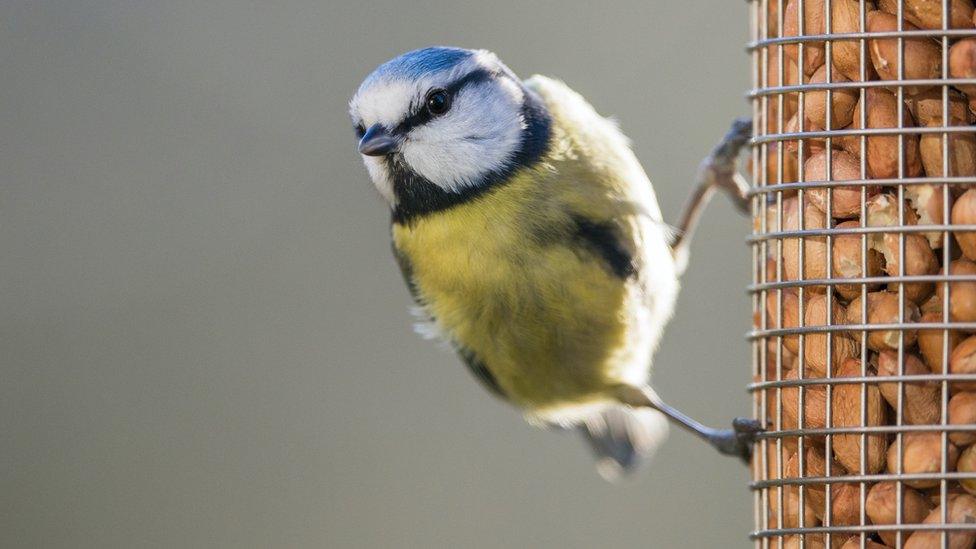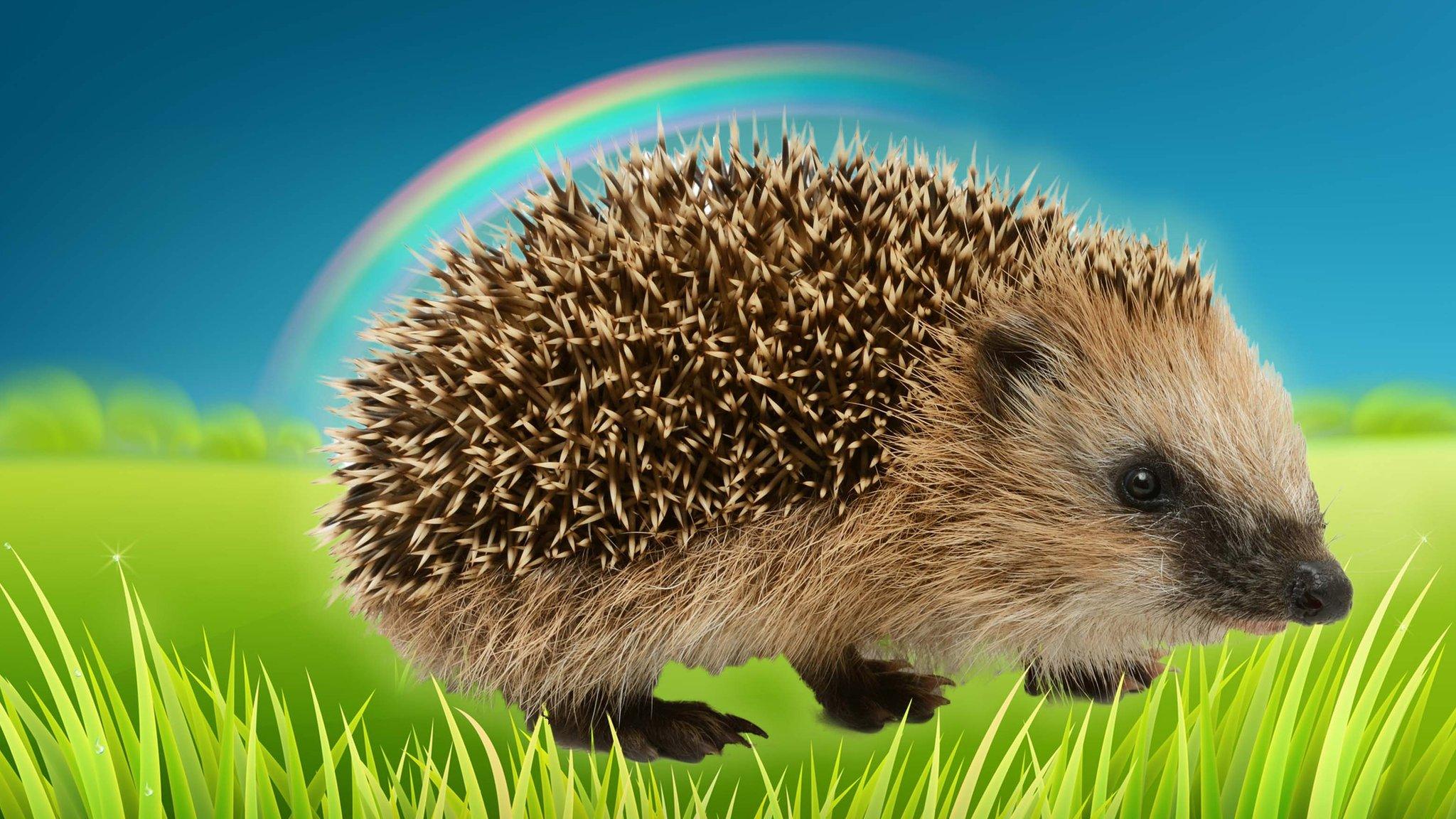How gardens can help hedgehogs survive
- Published
- comments

Hedgehogs are the only British mammal with spiky spines on their coats
Suburban gardens, parks and allotments are key habitats for urban hedgehogs' survival.
That's according to a new study carried out by conservationists at the Zoological Society in London, who used data to map out the best places for hedgehogs to live in the capital.
Hedgehog numbers are declining in the UK and the species is now vulnerable to extinction, mainly due to the loss of its natural habitat.
Researchers hope that finding out how hedgehogs use the built-up environments will help them find ways to best protect them.
What has happened to hedgehog numbers?
In recent years hedgehog numbers have greatly reduced.
The creatures are very vulnerable to road traffic, getting caught in netting or badger attacks.
Pesticides and herbicides in our gardens and on farmland, which are deadly to hedgehogs, have also had a big impact on hedgehog populations too.
It's thought there are around one million hedgehogs in England, Wales and Scotland, compared to 30 million in the 1950s.
Top tips for looking after a hedgehog
What did the new report find?
Conservationists looked at the data of 3,012 hedgehog occurrences and spottings, collected by volunteers, across 32 boroughs in Greater London.
From this, the team were able to come up with a predictive map of suitable habitats across the capital.
The most suitable habitats to help urban hedgehogs were found to be in London's suburbs - the residential areas surrounding city centres - where there are more gardens, parks and allotments, with less busy roads and less people around.
More central areas in London, that are built up and have a higher population of people, are far less likely to have hedgehogs living there.
The study also suggests that wild spaces that had been lost and replaced with pavements and roads greatly lowered their chances of survival.

Hedgehogs are at risk of extinction in the UK
A baby hedgehog is called a hoglet. They are born with soft spines under the skin to protect their mum but a second set of spines come through after a couple of days.
Other factors such as the presence of badgers (which are known predators and competitors in rural areas) also resulted in a smaller number of hedgehogs in Greater London.
Jessica Turner, who led the study, said: "To successfully protect and restore hedgehog numbers, it is important to understand where and how they use the built-up environment."
Robin Freeman who also worked on the study added: "As our populations increase and our cities expand, our impact on these species could be severe."
"It's wonderful to see that there are habitats within our capital that allow these species to continue and understanding how to sustain this in the future is an important next step."
Meet the girls who rescue hedgehogs
How can you help hedgehogs?
But there is lots that you can do to help these prickly creatures, who like to hibernate between November and March.
Hedgehogs eat, slugs, snails, caterpillars, earthworms and beetles, but they also enjoy cat food, cat biscuits and hedgehog biscuits, just make sure that any food you leave out is not fish based.
Even more important than food is making sure hedgehogs have water to drink. You can leave water out for them in a clean bowl and make sure it does not freeze over when the temperature drops. But remember, never leave out milk for hedgehogs to drink - it can make them very ill.
Creating more wildlife-friendly spaces in your gardens, like wood piles and bramble patches is also a good idea.
Top tip:
Hedgehogs are nocturnal animals - if you see a hog out and about in the day, it could be young or unwell. Ask an adult you trust to let your local wildlife group know.
Hedgehogs need places to hibernate, so if you can put out a hedgehog box or leave piles of undisturbed vegetation, such as fallen leaves, hedgehogs may use these as nesting sites.
Setting up a hedgehog highway, by making a small gap under fences, will also help hedgehogs to find food and shelter in your neighbours' gardens. A hedgehog can travel between 1-2km a night in search of food and usually ranges over an area of 10 hectares (24.7 acres).
- Published25 October 2022

- Published8 May 2024

- Published24 June 2020
